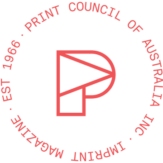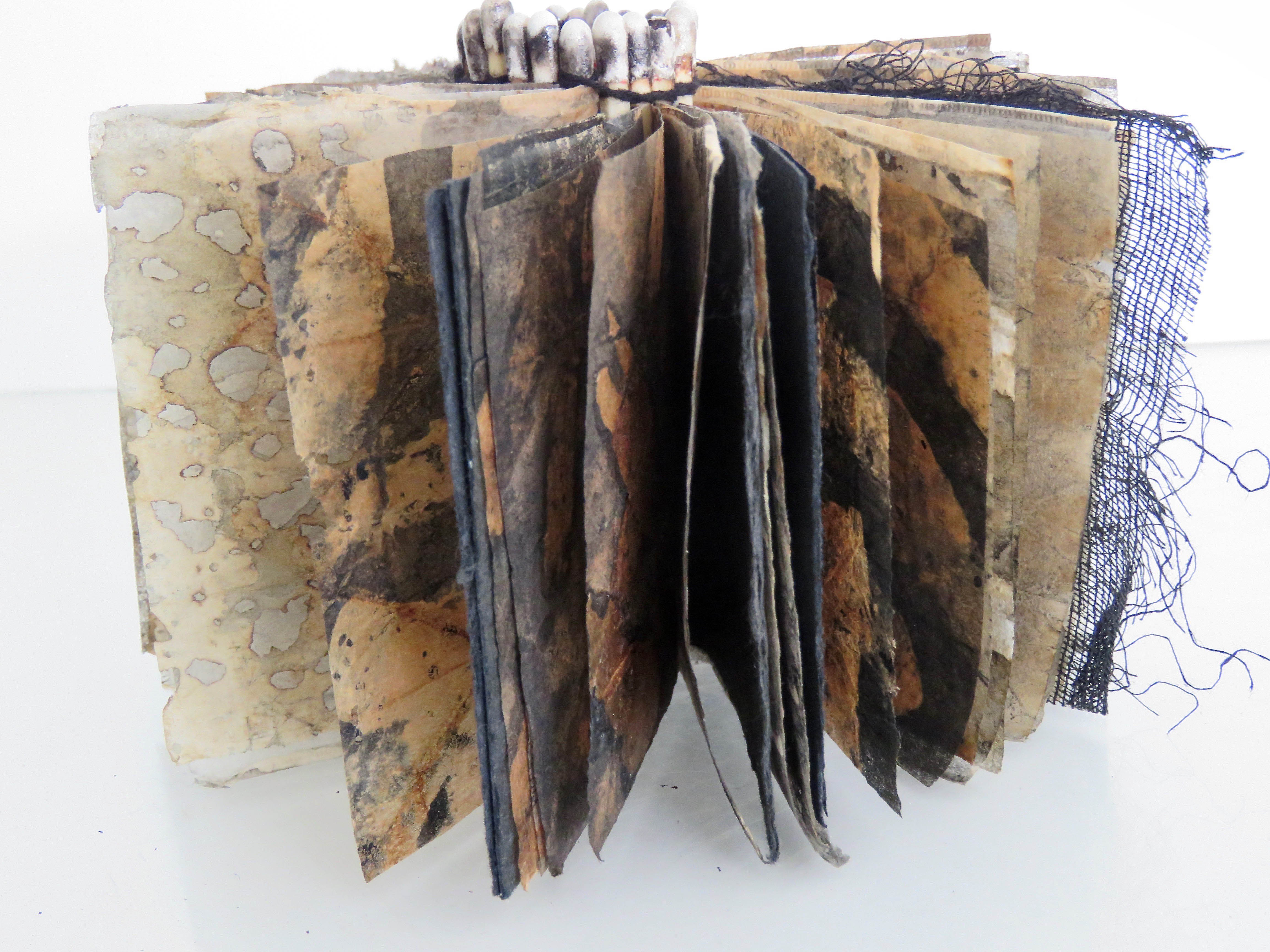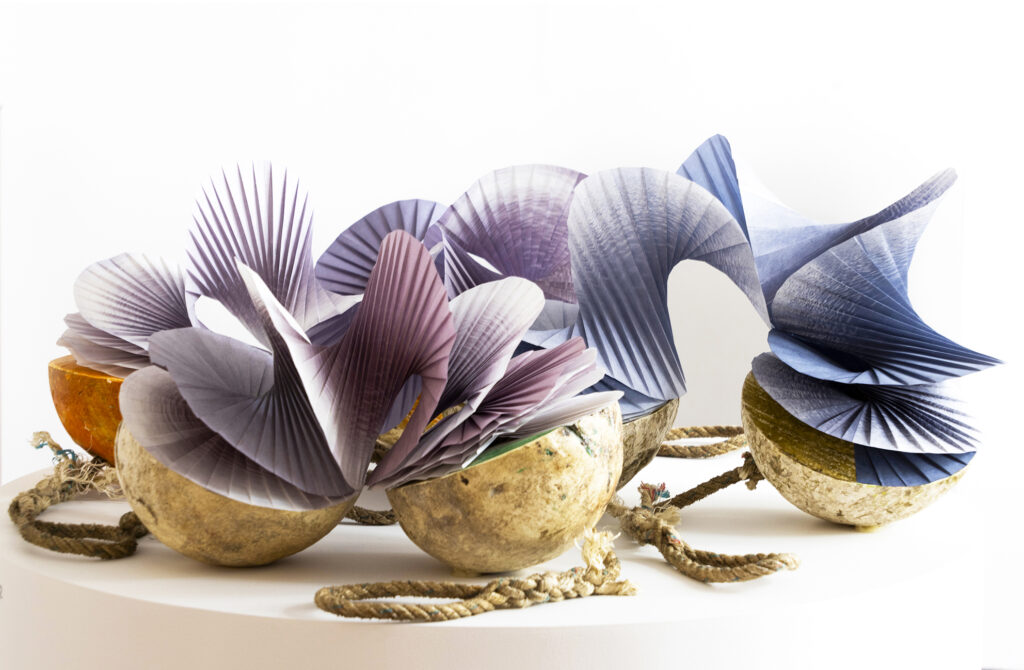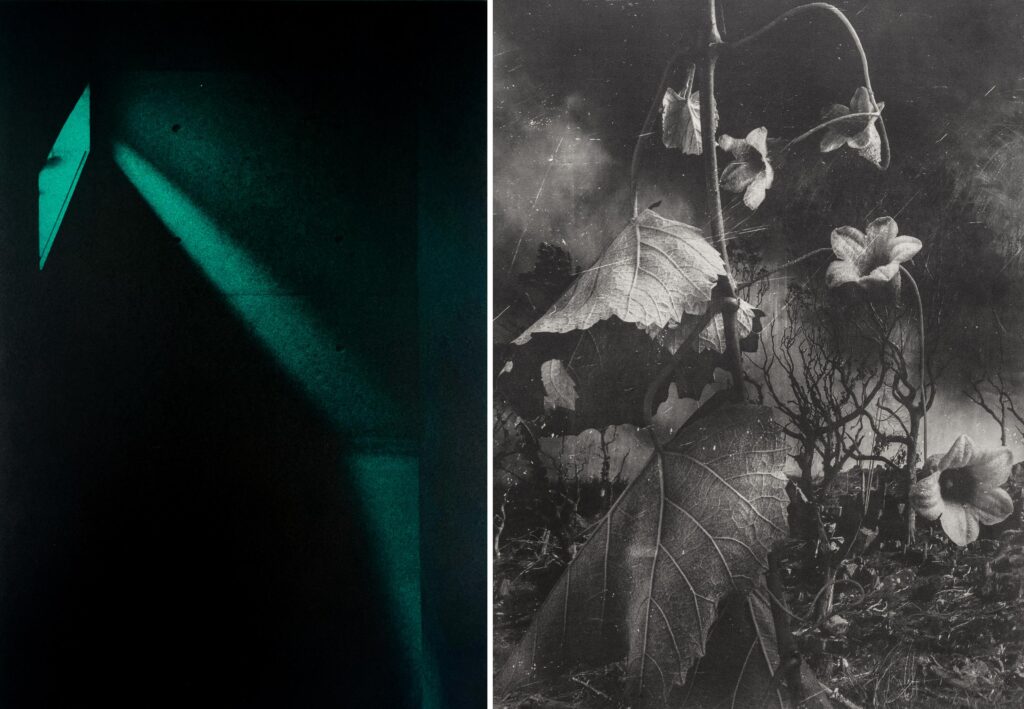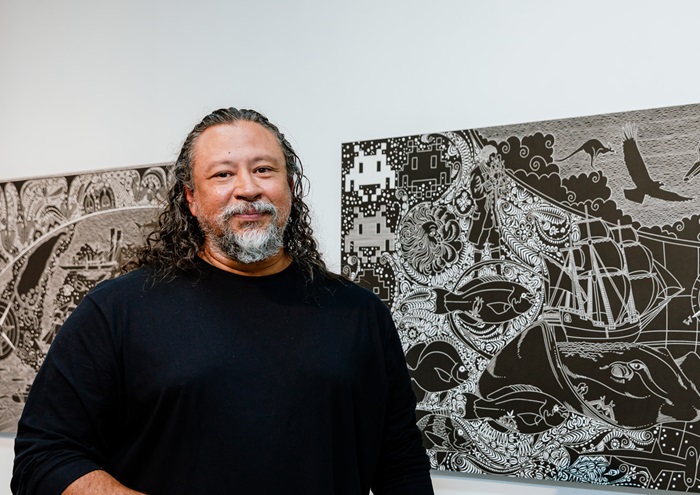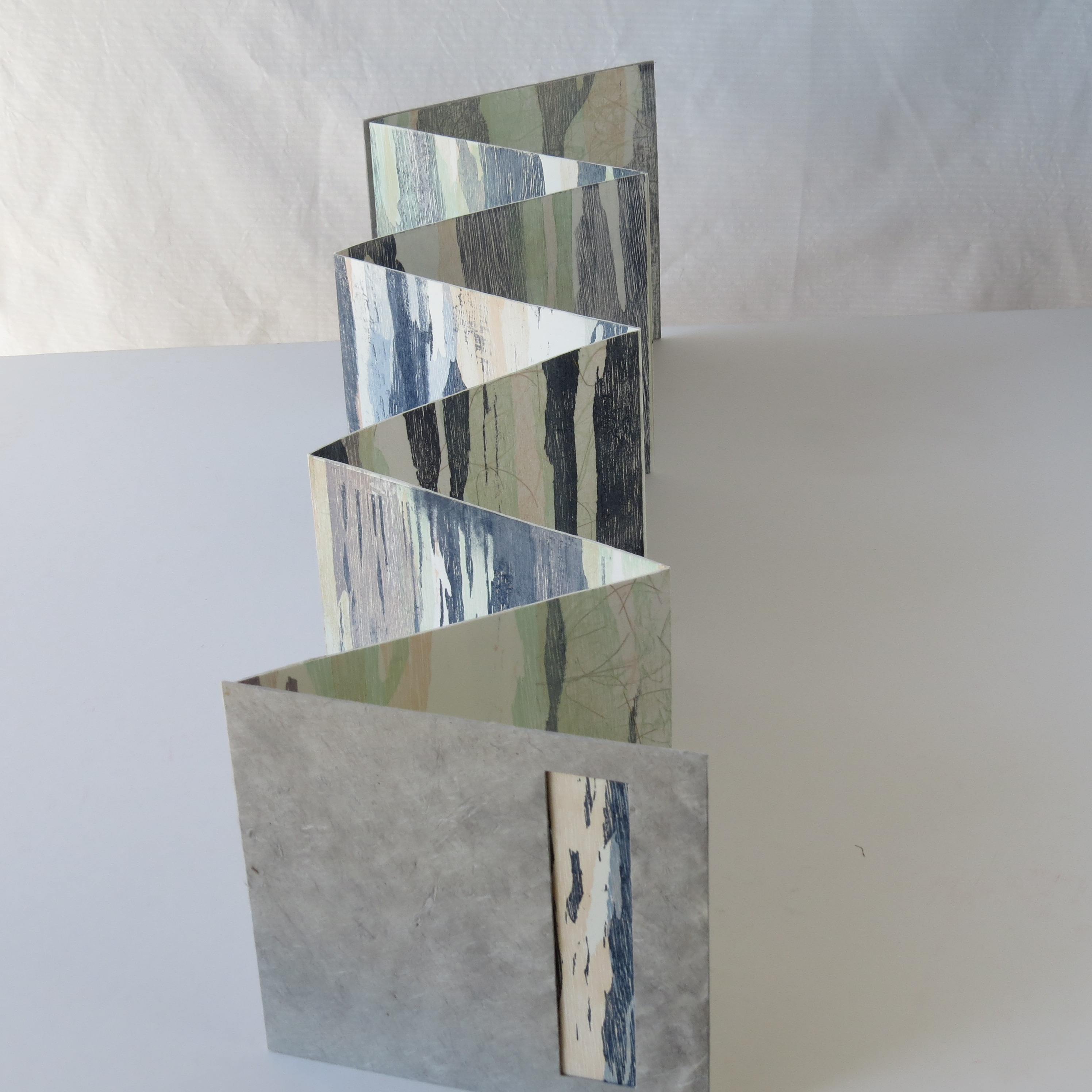
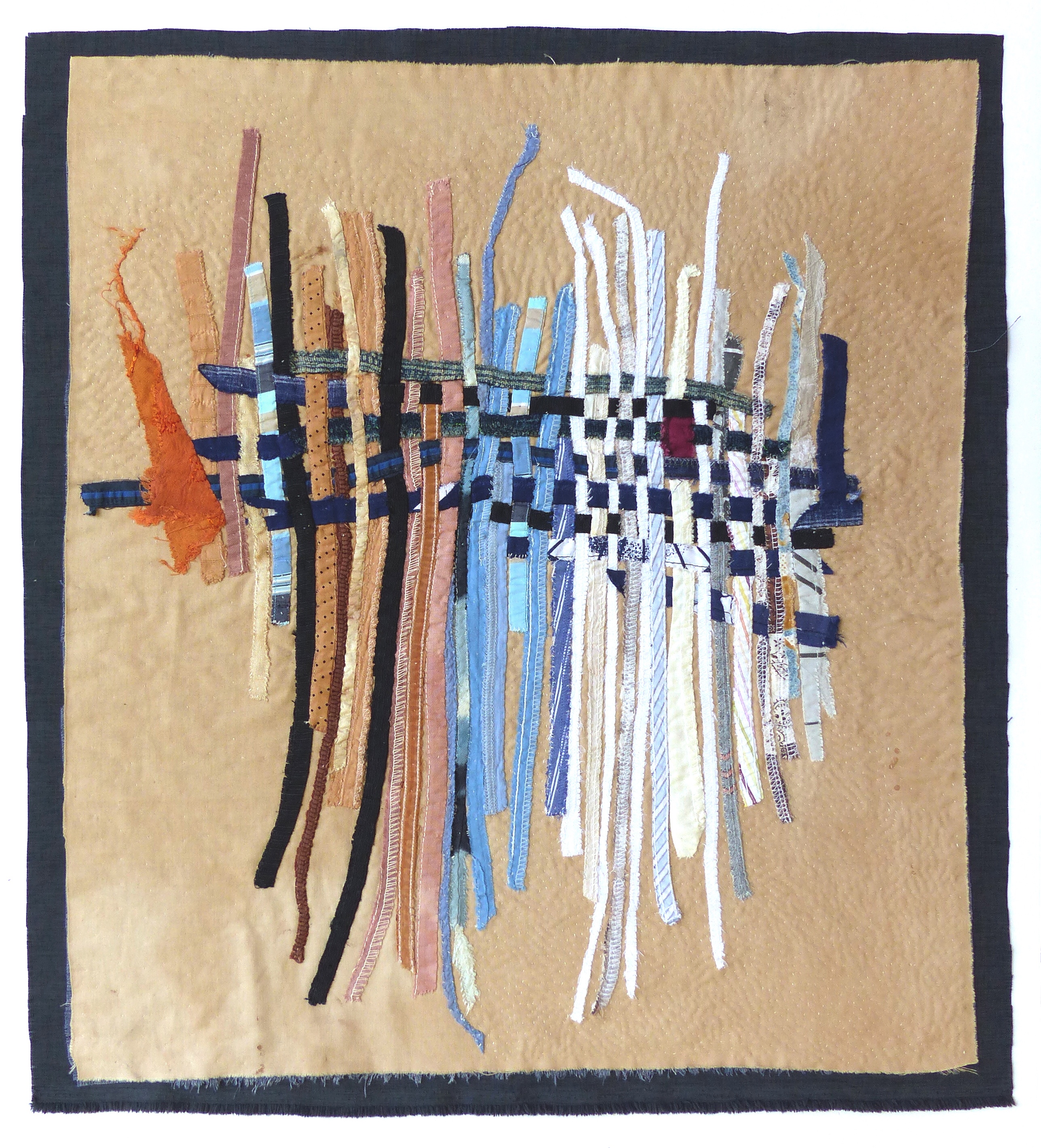
From top:
Megan Edwards, Aftermath, 2021, waxed, sumi-dyed, over printed and burnt teabags, 15 x10 cm, unique state
Trish Yates, Walk in the Woods, 2019, woodblock monoprint, 17.5 x 18 x 80 cm, unique state
Celia Wood, the year we couldn’t, 2021, hand-stitched, discarded cloth, eco dyed, 55 x 61 cm, unique state
The word ‘unfolding’ suggests a gradual reveal or unpicking of both the physical and the intellectual, of the simple and the more complex. From the physical act of turning the pages of a book or spreading open a piece of cloth, to the emerging message the maker wishes to share, there is both a mystery and implied promise in the opening of something that is closed, a message to be shared with the viewer.
For Megan Edwards and Trish Yates, as book artists and printmakers, and Celia Wood as a fibre artist, the concept of Unfolding grew out of the realisation that they had all been on a journey of discovery and that there were similar threads of interest, themes and mediums despite their very different art practice. All three artists share a fundamental concern for the future of our natural environment and its resources.
The themes that Yates employs revolve strongly around landscape and the natural environment inspired in particular by her love of Sydney’s local bushland and her travels around Australia. She has explored intaglio and relief printmaking techniques especially woodblock and monotype. Bookmaking is a natural progression of her printmaking as it returns to the origins of printmaking as a form of communication. The accordion-style artist books have also allowed her to express her ideas in new ways.
Her book Etched by Time is a response to travelling in the Kimberley region of Western Australia where the landscape is so old, scarred and weathered that they were there long before any other lifeforms existed on Earth.
Walk in the Woods celebrates the abstract qualities, textures, shapes and colours of our native eucalypts. Viewers can sense the feeling of wandering through the bush as they walk around the work.
Warnings not Heeded was a reaction to the terrible fires on the South Coast last year. Scientists have been warning against extreme weather events and their consequences for years but they have not been listened to. The intense red of the fires was hand-printed onto paper and formed the backdrop to the eco dyed and burnt paper images expressing the fear and anxiety of the time.
Wood enjoys working with discarded cloth—not only out of her concern for the environment—but to honour the journey it has already been on and the history it holds within it. A lot of the fabric is used, discarded clothes and household fabric (such as sheets). Inspired by the traditions of many countries of repurposing old clothes (using hand stitching) she likes to contemplate where the cloth might have been and in whose hands.
In the exhibition there is a set of five small wall hangings that began with a gift of vintage hankies that belonged to a friend’s mother, gifts from her father, more than fifty years ago, early in their marriage. They explore places of spiritual renewal in the natural world. There is also a companion piece about cicadas.
Several other pieces are about Wood’s experience of last year living through a pandemic and the personal and universal psychological stresses this presented.
The Year We Couldn’t, made from the seams of old clothes, came from feeling life was coming apart at the seams and from the fears, anxieties and uncertainties we all were living through. Letting Go resulted from a personal experience the pandemic threw up for her.
Yates and Edwards have previously collaborated on an installation titled “Consequences,” a response to the effects of climate change on the fragile Australian environment. Presented in both book and 3D form and incorporating printmaking, embossing, burning and waxing, Edwards has further developed this theme with a particular focus on the devastation and subsequent consequences, both good and bad, brought about by the terrible bushfires of the past decade.
The 3D installation titled Blaze represents the terror of the flames, the quietness of the blackened and ash covered vegetation and unexpectedly, the blossoming of the rare pink flannel flowers – a gift from the depths of tragedy and loss. In a similar manner, the more abstracted multi-dimensional books in the Aftermath series, provide a register of the damage and loss experienced.
Counterbalancing these are the calming introspections of the series of books Simply White, Quiet White and the Reticence of White. Using printmaking, embossing and handmade and cast paper, the absence of colour invites the viewer to mindfully consider the possibilities of light and shadow and, with the addition of slow stitching, suggests that an absence of colour can quietly inspire a sense of inquiry, personal balance and reflection.
—
Unfolding, an exhibition of artists’ books, prints and textiles by Megan Edwards, Celia Wood and Trish Yates is at gaffa gallery, 281 Clarence Street, Sydney, 13-24 May www.gaffa.com.au
—
Join the PCA and become a member. You’ll get the fine-art quarterly print magazine Imprint, free promotion of your exhibitions, discounts on art materials and a range of other exclusive benefits.
